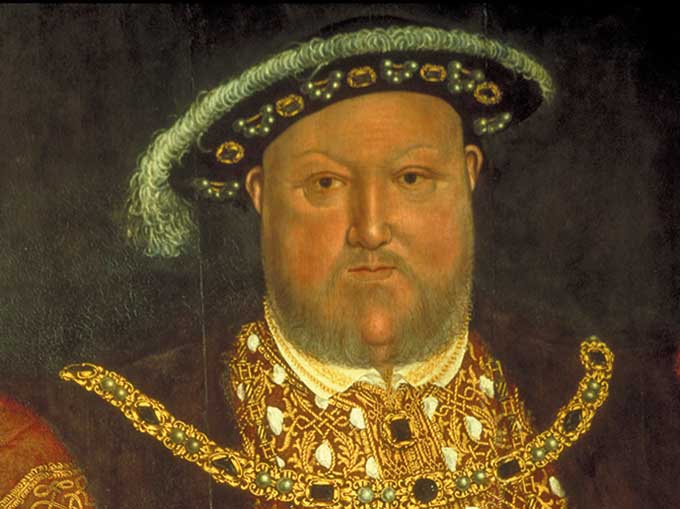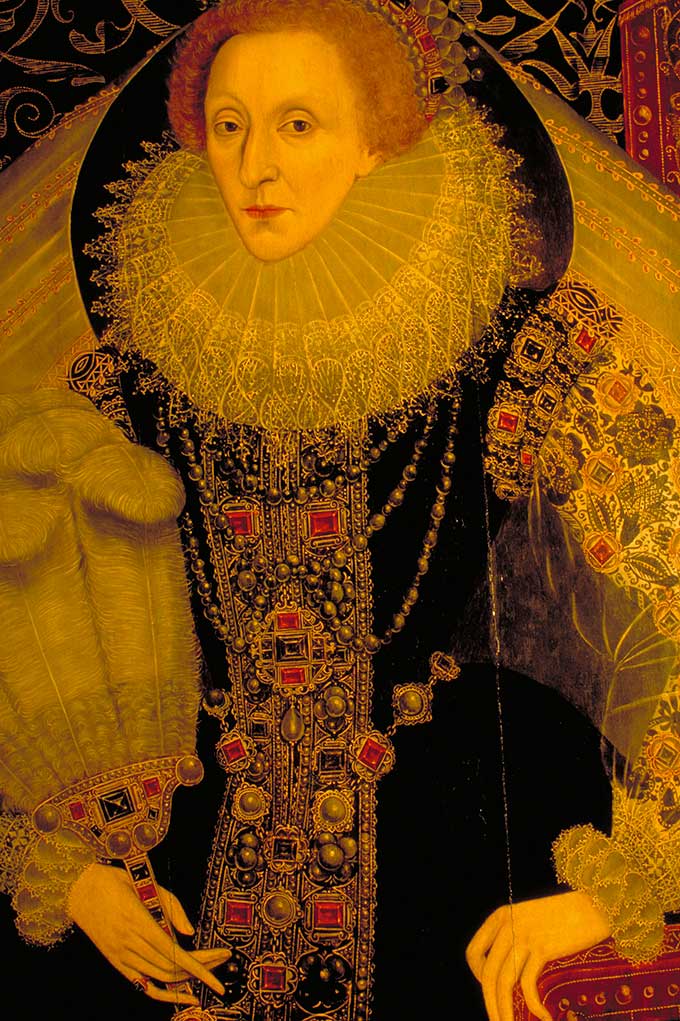
The Tudor age was a tumultuous period of history that did much to shape modern Britain as we know it. Here Melita Thomas, of the Tudor Times, selects the 10 most influential men and woman of that era.

The Tudors changed the face of England and their influence still resonates today across Britain and also much of the Western world. It was not only monarchs but also the era’s politicians, playwrights and statesmen made us who we are today.
Perhaps the most famous Tudor of all is William Shakespeare (c.1564-1616), the playwright from Stratford-upon-Avon, whose richness and complexity of writing has been the single strongest influence on our language. Shakespeare was born in Warwickshire, but went to London to seek his fortune, becoming a prolific writer and actor. Many of his plays have political overtones, and much of our perception of English history is based on his work.
Shakespeare was not the only man whose facility with words still affects us today. The less well-known William Tyndale (c.1494-1536) might also claim to be the father of our modern language. His translation of the Bible into English was the cornerstone on which the King James Authorised Version was built. Tyndale was a religious reformer, willing to give his life so his countrymen could read the scriptures in their own language. His last words, before being cast into the flames in Antwerp, were “Oh Lord, open the King of England’s eyes.”
Henry VIII and Anne Boleyn
The monarch in question was King Henry VIII (c.1491-1547). Tyndale wanted Henry to go further in his religious reformation than separating the English church from Rome. Henry was motivated, encouraged and supported by one of the most influential women of the time: Anne Boleyn (c.1501-1536). Daughter of one of the King’s courtiers, Anne refused to become Henry’s mistress. A religious reformer herself, Anne introduced Henry to Tyndale’s work, giving him intellectual support for his breach with Rome. Without Anne’s driving ambition, Henry might have faltered in his resolution to separate England from the Catholic Church. This action alone would make Henry one of the most influential men of the time. In addition, Henry‘s dissolution of the monasteries had ripples centuries later, and he sowed the seeds for the navy.
Tudor explorers
The growth of this mastery of the seas can be seen in the later years of the 16th century when explorers such as Sir Francis Drake (c.1540-1596) and Sir Walter Raleigh (c.1554-1618) broadened the sphere of English influence to North America, not just founding early colonies, such as Roanoke, but bringing back the exotic potato, which came to be a staple of the diet of the British Isles. There was also tobacco – love it or loathe it, we cannot deny its importance commercially and culturally, as well as in the terrible legacy of slavery it created.
Exploration was only part of Drake and Raleigh’s role. The support given by Henry VIII and Anne Boleyn’s daughter, Queen Elizabeth I, to the Netherlands’ struggle to throw off rule by Spain, the most powerful nation in Europe at the time, left England dangerously exposed to attack. Drake’s courage led him to undertake more than one dangerous mission to try to scotch the threat of invasion by the Spanish, setting fire to ships being prepared for the invasion force known as the Spanish Armada, even before war became inevitable.
Spies in the Tudor age
The conflict with Spain was not only a war at sea, and, vicariously, on land in the Netherlands – it was also a war of spies, espionage and plots. Thomas Cromwell (c.1485-1540), one of Henry VIII’s most important councillors, who had drafted the legislation that separated England from Rome, had relied heavily on secret surveillance, designed to identify those who objected to the king’s religious innovation. This spy network was developed into one of huge sophistication and complexity by Sir Francis Walsingham (c.1532-1590) and was used to mitigate the perceived threat of a Catholic resurgence, which underlay the tensions with Spain. Walsingham witnessed the Massacre of St Bartholomew while ambassador to France and he was profoundly shocked by it; the experience drove him to a fear of Catholicism that bordered on an obsession. His spies and informers uncovered (and arguably created) plots against the Queen that reinforced an “anti-popery” strain in English politics that lasted for centuries.
Walsingham’s closest associate was the most successful statesman of the age, Sir William Cecil, Lord Burghley (1520-1598). Burghley, whose country house at Stamford embodies the architectural style of the age, had a dream of a united Britain, creating a Protestant bulwark against Catholic France and Spain. His vision, which he pursued unswervingly as Elizabeth I’s chief minister, led him to support the Reformation in Scotland – created, almost single-handedly by charismatic preacher John Knox (c.1513-1572), whose extraordinarily effective orations converted a swathe of the governing class, not just in Scotland, but also in England, where his radical religion influenced a generation of politicians, many of whom became Elizabeth I’s strongest adherents.

Queen Elizabeth I
Although the social constructs of the time meant women played a smaller role in public life, within the upper echelons of society there were several influential women – most notably, of course, Elizabeth I (1533-1603), whose 45-year reign has been considered a golden era. Her legacy was not only exploration and literary achievements, but also the melding of the country into the modern nation state. Of course, there were negatives, too – the Irish wars of Elizabeth’s final decade created the groundwork for centuries of bloody conflict. Her later years were also marked by the growing tensions with Parliament over how and when taxes were to be raised, a development only successfully held in check by Elizabeth because of her huge popularity at the time. These problems, never solved, came home to roost in the Civil War of the mid-17th century, which changed the face of the British Isles.
Elizabeth was educated and highly literate, traits she shared with her great-grandmother, Lady Margaret Beaufort (1443-1509), a woman whose determination and ability to grasp opportunities brought the Tudors to the throne in 1485. Without Margaret’s financial and moral support, her son, Henry Tudor, might never have attempted to invade England, and history would have been different. Lady Margaret had a huge bearing on education, too, with the founding of St John’s College and Christ’s College Cambridge, and the Lady Margaret professorships of divinity at Oxford and Cambridge universities. St John’s College became a centre of evangelical thought in the 1530s, educating many of the men who would be influential in the Reformation and under Elizabeth I.
These men and women were profoundly different from us in many ways – their religion-centred philosophy, their acceptance of physical brutality, their rigid social hierarchies – yet their religious, cultural, political and expansionist achievements, however we might judge them now, created our world as we know it today.






 © 2024
© 2024